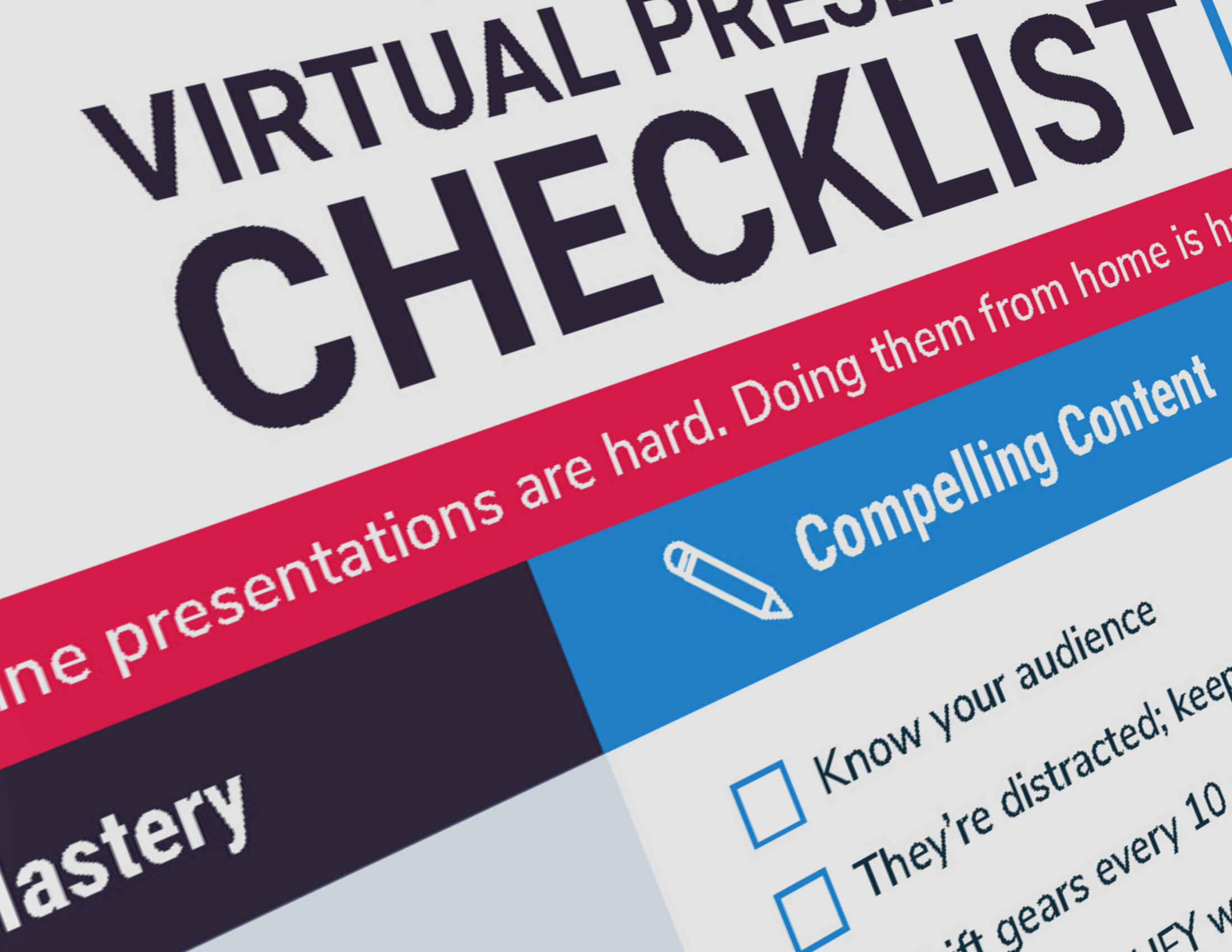 A British professor recently conducted an informal (and wonderful) study showing that boring speeches are more likely to go longer. (Wouldn’t you know it? The pain of sitting through an awful speech is compounded by time!)
A British professor recently conducted an informal (and wonderful) study showing that boring speeches are more likely to go longer. (Wouldn’t you know it? The pain of sitting through an awful speech is compounded by time!)
His findings point to the importance of brevity and discipline. So here are seven ways you can better focus your presentation.
But first, let’s look at that study.
The Data Behind Boring = Longer
Robert Ewers teaches at Imperial College London and it’s clear he attends more than his share of academic conferences. Apparently he had finally had enough, and sought to answer the question: are dull presentations truly longer or do they just seem that way?
Writing in the journal Nature, he reports that he sat through 50 talks and timed them, making a determination at the four-minute mark of whether they were boring or interesting. Here’s what he found:
“The 34 interesting talks lasted, on average, a punctual 11 minutes and 42 seconds. The 16 boring ones dragged on for 13 minutes and 12 seconds.”
I love the combination of data (“thereby wasting a statistically significant 1.5 min; t-test, t = 2.91, P = 0.007″) and pure subjectivity. But come on, we all know a boring speech when we see one, right?
The good professor then bottom lines it:
“For every 70 seconds that a speaker droned on, the odds that their talk had been boring doubled.”
The Things We Do When We’re Bored
I can totally relate both to Dr. Ewer’s pain and to his approach. Just as acting has ruined my ability to sit through a lot of amateur productions, my work to put an end to Death by PowerPoint has made it nearly impossible for me to tolerate a bad speech.
In fact, it was an awful speech — one of the worst I’ve ever seen — that motivated me to write the book 11 Deadly Presentation Sins. I vividly recall taking copious notes on the offending speaker’s every mistake.
I’ve written before about how to cut the fat from your presentation and spoken on the subject numerous times. You can follow those links for more details, but here are my updated tips on how to focus your presentation on the essentials.
1. Start With a Singular Goal for Your Speech
Presenters are often vague about what they want to accomplish with their speech, or they have multiple objectives. To focus your presentation, you need to stick to a clear and single goal. The whole point of a speech is to change people’s minds or behavior. That could mean you want them to:
- Approve your idea.
- Hire your business.
- Buy your product or service.
- Invite you back to hear more.
- Be more productive or collaborate more.
- Trust you to get the job done.
- Rally to your side.
So pick a goal and stick to it.
2. Go Deep Instead of Broad
I admit this is my personal Everest. Every expert on the planet recommends that it’s better to explore just a few points deeply than to cover a bunch of them briefly. This one’s hard for me because I always feel I have SO much to say.
Here’s a remedy that helps me: assume you’ll have another bite at the apple. That is, you’ll have a chance to return and talk more, or you can provide a detailed handout, or you can follow up with more information.
3. Survey Your Audience to Help You Prioritize
If you can, try surveying your audience ahead of time using social media or the various online polling apps available. If you can’t communicate with the specific audience, try like-minded people among your contacts.
Just beware: your audience doesn’t know what they don’t know. They may say a certain topic is unimportant to them, but that could stem from an overestimation of their own capabilities.
Remember, you’re the expert. (I hope! Otherwise, why are you speaking?) Ultimately you have to decide what’s vital to your audience’s needs.
4. Focus Your Presentation By Practicing Out Loud
This is my litmus test: when I get bored, I assume my audience will get bored. Which is one of many reasons I practice my presentations out loud and on my feet. You simply cannot do this sitting at your desk, clicking through your slides and reading in your head — you will end up skipping or speeding through the parts that feel like a chore.
Practicing aloud is also the best way to get a sense of your timing so you know how much to trim.
5. Try Cutting 25% of Your Content
Let’s say your time slot is 20 minutes. What would you do if the meeting organizers changed their mind and said you only had 15 minutes?
Most people’s answer is to simply talk faster! Not a good choice.
See how merciless you can be in making cuts, even if it’s just 10%. One area ripe for trimming is anything you love a little too much. It’s the old literary advice to “kill your darlings” — content that you’re so in love with that you’ve lost all objectivity.
Another issue to look at is pet peeves. A speech should not be all about the personal axes you have to grind, unless those peeves genuinely point to a larger issue people need to know about.
6. Limit the Spontaneous Asides and Ad-libs
Here’s where a lot of speakers get into trouble. As you’re talking, your mind makes connections to related points, experiences, anecdotes, etc. It’s great to be in the moment, and a few of those add freshness and spontaneity to a presentation. But too many of these tangents tend to bog things down.
This problem compounds itself when your ad-libs get a few laughs or nods — suddenly you’re in ego-pleasing mode and you can’t stop yourself. It’s like ice cream — if one scoop is good then a quart must be great!
Be disciplined.
7. Stay Tuned to Your Audience’s Reactions
This may be the hardest point to master. We’ve all had the experience of sitting in the audience while a colleague drones on and on, oblivious to people getting restless and bored. How can the presenter not notice what’s happening right in front of them?
The answer is they are too wrapped up in their own heads, just trying to remember and express every vital bullet point. True speech mastery requires the ability to maintain your situational awareness and tune into what people’s body language and facial expressions are clearly telling you.
Are people shifting in their seats? Buried in their screens? Coughing? Whispering to each other? Leaving the room? Throwing things at you?
Okay, some of these clues are easier to detect than others. The point is, if you’re unable to pick up on these signals, it probably means you’re not prepared enough. When you know your content and have truly internalized it, that leaves you open to what’s going on around you.
My Own Struggle with Focus
I can attest that the struggle is real. And even though I can quickly identify the fat in my clients’ presentations, it really is different when the content is your own.
Right now I’m polishing up two speeches I’m giving next week: an hour-long session and a shorter talk with a hard 15-minute limit. Interestingly, it’s the longer one that’s been harder to cut.
And I’ve actually applied every one of the steps outlined here. But there is one additional approach that has helped: thinking of the presentation as a train, not a car. That means as I practice it (out loud, of course), I work hard to keep the momentum driving ever-forward.
By visualizing a train, I manage to avoid getting sidetracked, as it were, or lingering too long in any one station, to really stretch the analogy.
So bear these tips in mind for your next presentation. And remember: nobody ever walked out of a meeting saying, “Man, I wish that presentation had been longer!”
[Image via Marcelo Terraza]




